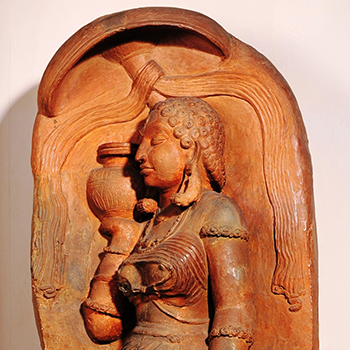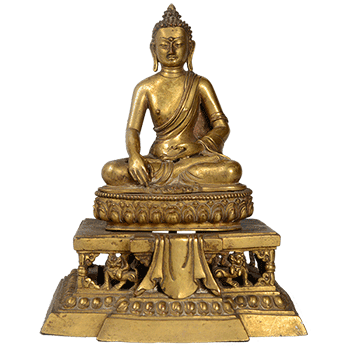This artefact is commonly recognized as the Pasupati Seal or Proto-Siva seal. It was excavated at Mohenjo-Daro within the Indus valley which is dated to approximately 2500 BC. Made of Steatite, it is a rather small object measuring a mere 3.4cm in height, 3.4cm in length and 1.4 cm in width. One can currently find this artefact in the Indus Valley civilization Gallery within National Museum, New Delhi
































